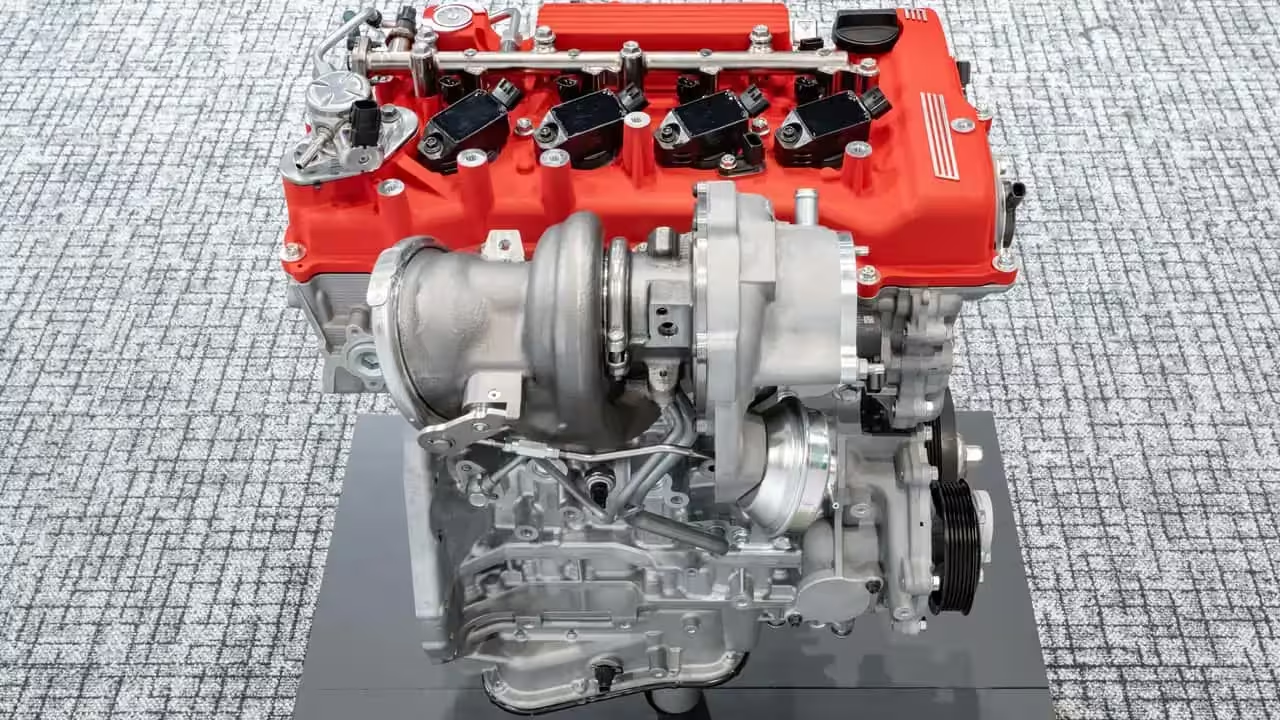4 Minutes
Toyota Raises the Bar With a Groundbreaking Four-Cylinder Powerplant
Toyota is set to revolutionize the automotive world by unveiling a next-generation family of four-cylinder combustion engines that promise to deliver both efficiency and breathtaking power. This innovative lineup, featuring both naturally aspirated and turbocharged variants, includes 1.5-liter and 2.0-liter gas engines designed with a focus on lightweight construction and compact dimensions. Although maximizing fuel efficiency is at the core of this project, Toyota's Gazoo Racing division is ensuring that performance enthusiasts have a lot to get excited about.
G20E Engine Debuts: A Glimpse of Supercar Power in a Hot Hatch
First previewed in the GR Yaris M Concept at the Tokyo Auto Salon, Toyota's all-new "G20E" four-cylinder engine is mounted over the rear axle of this striking, mid-engined hot hatch. Teamed with a high-performance IHI turbocharger, early outputs are estimated between 400 and 450 horsepower. However, recent comments from Toyota engineers confirm that with a larger turbo setup, the potential easily exceeds 600 horsepower—a figure typically reserved for high-end supercars.
Comparison: Outpacing the Competition
To put this in perspective, Toyota’s traditional "G16E-GTS" three-cylinder turbo engine—found in the GR Yaris, GR Corolla, and the Lexus LBX Morizo RR—delivers up to 300 horsepower. The new G20E, especially in its fully tuned iteration, dwarfs this output and even rivals engines like the Mercedes-AMG M139l (469 hp in the C63 plug-in hybrid) and the famously limited Mitsubishi Lancer Evolution X FQ-440 MR (440 hp, only 40 units produced). The G20E could set a new benchmark for four-cylinder performance in production vehicles.

Versatile Engineering: Built for a New Generation of Performance Cars
Toyota designed the 2.0-liter variant for use in both longitudinal and transverse layouts, offering immense flexibility for future platforms. This opens the door for its application in a wide variety of high-performance models: from front-engine sports cars to rear- and mid-engine exotics. Industry rumors suggest this powertrain could underpin revitalized versions of beloved nameplates like the Celica and MR2, and even a future GR86, while the iconic Supra is set to continue into the next generation with possible hybrid options.
Specifications and Unique Design Elements
- Displacement: 1.5L and 2.0L options
- Turbocharged output: 400–450 hp (with reports stating 600+ hp possible)
- Lightweight and compact architecture
- Tunable design allowing for extensive modification
- Configured for both front and rear applications in various wheelbase vehicles
Toyota's engineers have even left generous spacing between the engine cylinders, allowing for considerable boring and further tuning potential—an approach reminiscent of the legendary 2JZ days, sparking excitement among the tuning community. The GR Yaris M’s chassis had to be slightly extended to accommodate the rear-mounted engine, hinting at the performance ambitions behind this project.
Performance and Emissions: Walking the Regulatory Tightrope
While the G20E has the potential to shatter current four-cylinder power records, real-world outputs may be capped by increasingly strict global emissions standards. Toyota is likely to balance stunning performance with efficiency requirements, possibly offering the most powerful versions in motorsport or special edition models where emissions constraints are less restrictive. Even so, a production model boasting 400+ horsepower from a four-cylinder is a remarkable feat, ensuring strong market positioning among sports car enthusiasts.
Collaborative Innovation: Extending Combustion Engine Viability
Toyota’s new engine development is part of a wider Japanese automotive initiative to extend the life of internal combustion powertrains. In parallel, Mazda is working on rotary engines for range extenders, while Subaru refines its iconic boxer engines. All three automakers are investing in hybridization and exploring carbon-neutral fuel options, including liquid hydrogen, advanced biofuels, and synthetic alternatives—efforts aimed at sustainable performance and future-proofing the driving experience.
Market Trends: Combustion vs. Electrification
Despite global shifts toward electric vehicles, Toyota remains committed to high-performance combustion engines. Chairman Akio Toyoda recently reiterated his belief that electric vehicles will top out at around 30% of the market, even as data from the International Energy Agency shows that over 20% of cars sold last year worldwide were EVs. Projections for 2025 suggest continued EV growth, driven largely by China, but Toyota is confident there will always be demand for advanced gasoline engines among driving purists.
Conclusion: Setting a New Standard for Four-Cylinder Engines
Toyota’s bold new four-cylinder engine family showcases the brand’s dedication to both technological advancement and pure driving excitement. Offering eye-catching performance figures, versatile design, and a tuner's dream platform, the G20E and its siblings could ignite a new golden era for internal combustion sports cars. As electrification surges ahead, Toyota is proving there’s still plenty of life—and power—left in the classic four-cylinder engine.
Source: motor1



Comments